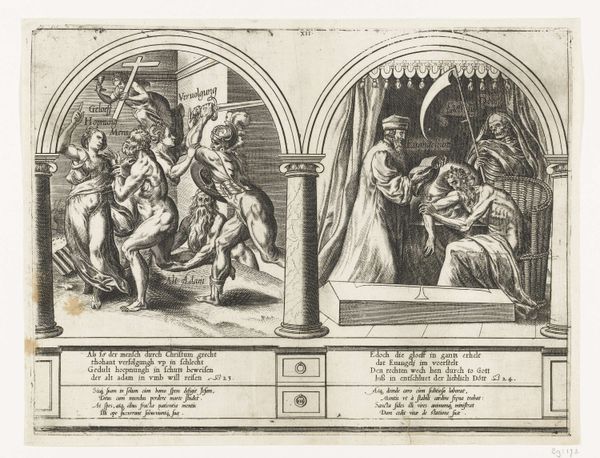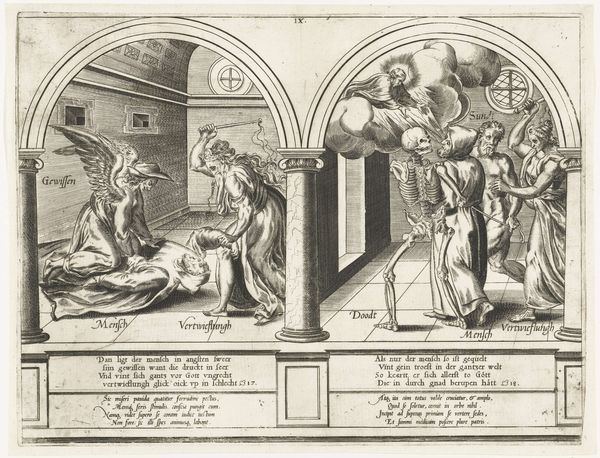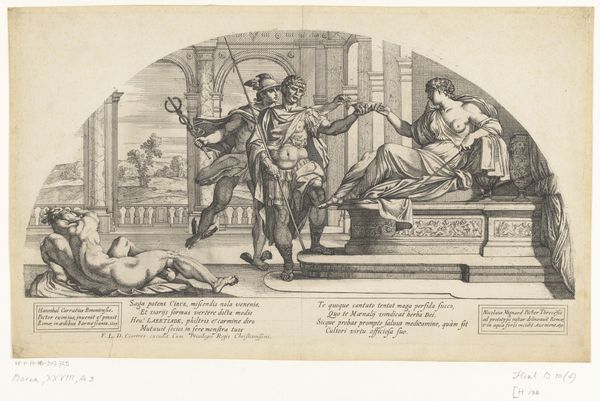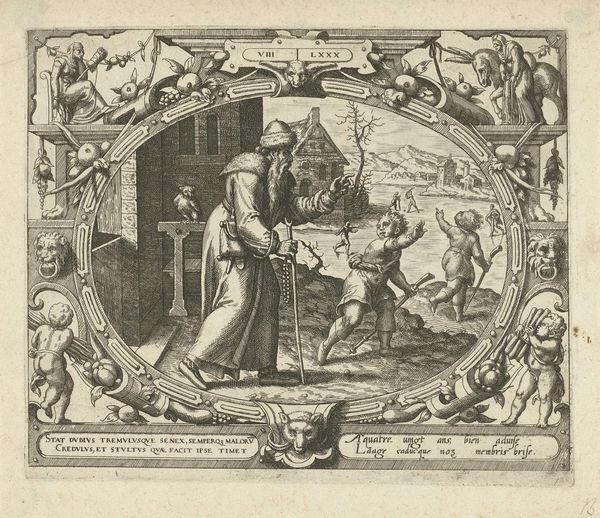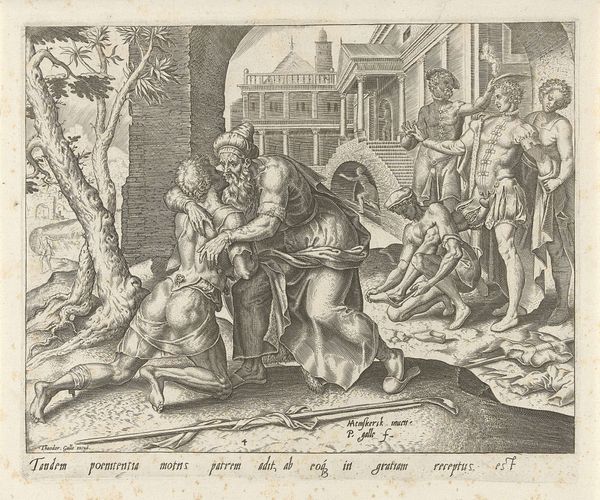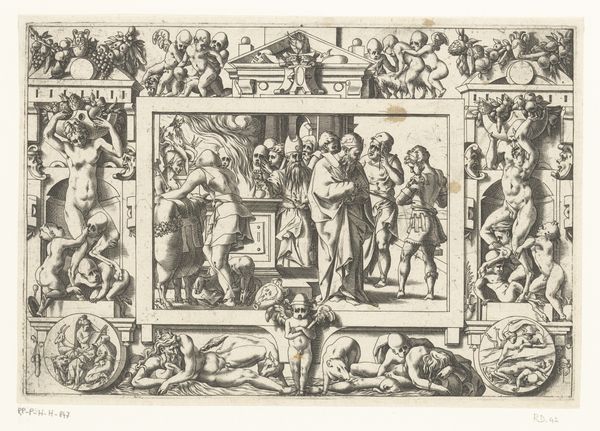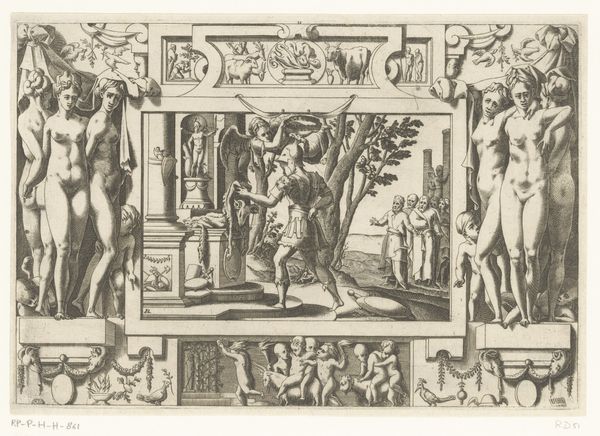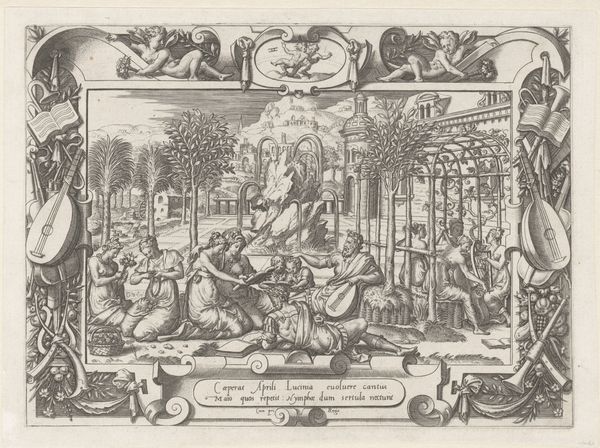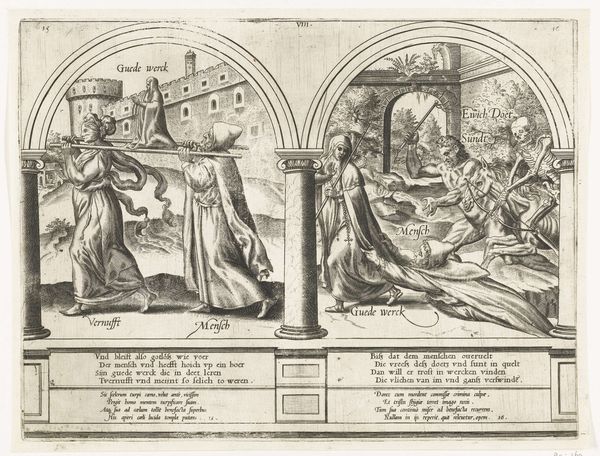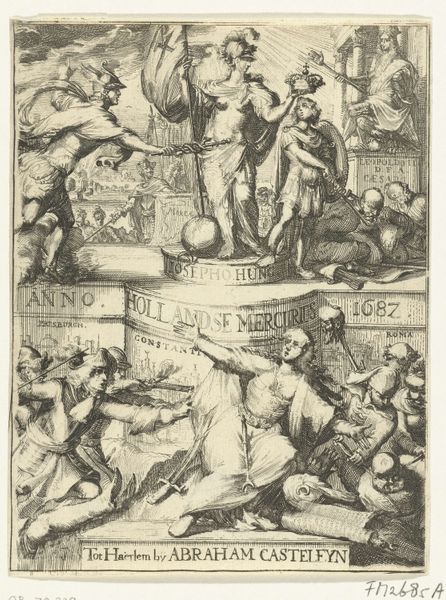
drawing, print, ink, engraving
#
drawing
#
allegory
#
pen drawing
# print
#
figuration
#
11_renaissance
#
ink
#
history-painting
#
northern-renaissance
#
engraving
Dimensions: height 274 mm, width 361 mm
Copyright: Rijks Museum: Open Domain
Curator: This is "De Mens wordt herboren en vernietigt zijn Goede Werken," an engraving by Frans Huys, dating back to between 1546 and 1562. Editor: My first thought? Intense. A primal scene almost. I see struggle, maybe destruction… certainly transformation. It’s visceral despite being so detailed and, well, antique. Curator: The title gives us a clue. In essence, it translates to "Man is Reborn and Destroys his Good Works". We need to see it through a Northern Renaissance lens, understanding the anxieties of the time related to salvation, human nature and emerging humanism. The print uses allegory. Editor: Allegory, right. I get that from the…well, the figures crammed into each archway. On the left, the figure labeled "Menfch" seems almost pleading toward “Godt.” Meanwhile on the right, someone labeled “Good Work” looks like they’re getting the worst of it from what appears to be the same "Menfch" character? So is the reborn man rejecting the conventional path to salvation? Curator: Precisely. Think of it in the context of Reformation-era anxieties. The artwork stages a kind of internal battle where reliance on “good works” as a path to divine favor is actively destroyed in favor of some other spiritual awakening. Note, too, how earthly deeds are depicted: passive, supine, already defeated! Editor: Interesting. It’s funny, isn't it, how even in these rigid moral allegories, artists still capture so much raw feeling. That figure on the left–writhing and reaching–that's just pure, unadulterated human striving, and the violence and destruction are so in your face. Curator: The artist skillfully employed the engraving medium to create those sharp contrasts, that depth and density of figures that adds to that feeling of anxiety and drama that you identified early on. The figure on the right seems locked in struggle. I appreciate you zeroed in on that—that kind of active struggle against prevailing norms. Editor: So it is about human endeavor in a bigger perspective, though. As a print, it probably reached quite a few people. It is now displayed in the Rijksmuseum collection. It makes you wonder how revolutionary people considered it then. And how revolutionary do we consider that attitude now? What “Good Works” are we dismantling, consciously or not, as we seek some kind of rebirth or enlightenment? Deep stuff! Curator: Indeed. Perhaps the engraving pushes us to re-examine these ideas, what exactly is reborn and how that leads to destruction for new constructions. The print offers us a potent reminder to question the foundations on which we build our values.
Comments
No comments
Be the first to comment and join the conversation on the ultimate creative platform.
